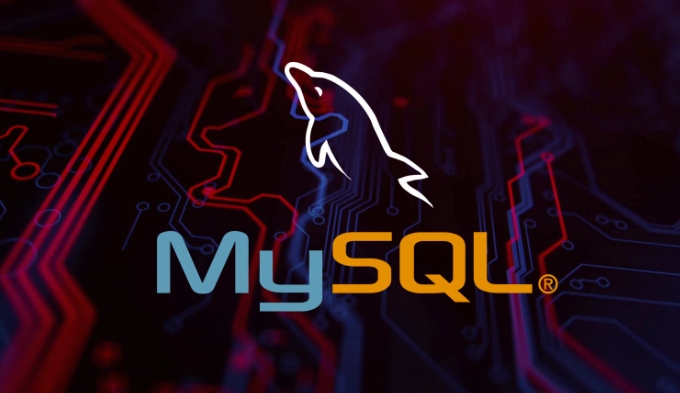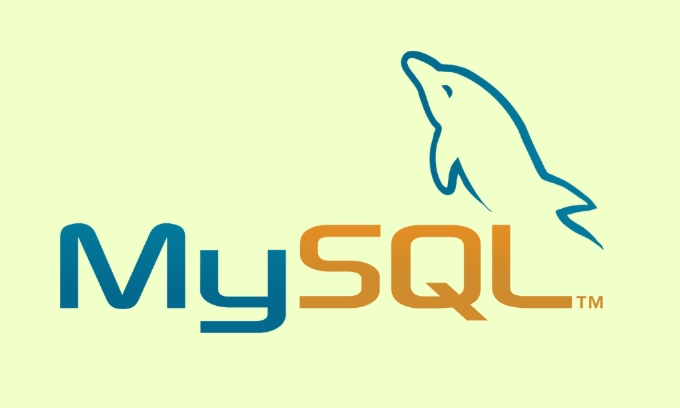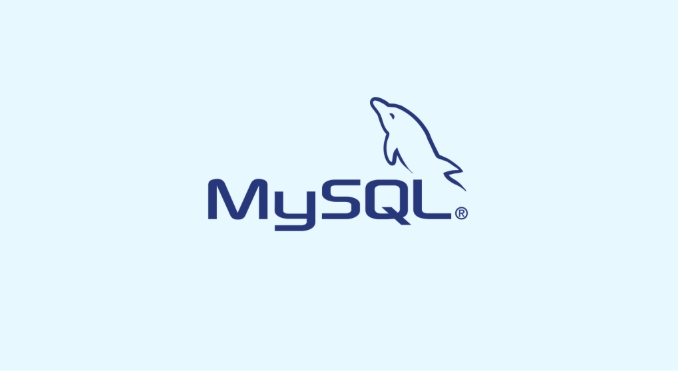Implementing MySQL high availability solutions (clustering, etc.)
Jul 02, 2025 pm 04:48 PMTo implement MySQL high availability, choose a clustering solution like MySQL InnoDB Cluster, configure quorum-based failover with routing layers, define clear failover rules, ensure application resilience, monitor replication lag and node health, use tools like Prometheus for monitoring, maintain regular upkeep, and synchronize time across nodes via NTP.

If you're running MySQL in a production environment, high availability (HA) isn't optional — it's essential. Downtime means lost data, revenue, and trust. Implementing MySQL HA involves more than just setting up replication; it requires thoughtful planning around clustering, failover strategies, and monitoring. Here’s how to make it work without overcomplicating things.

Choosing the Right Clustering Solution
MySQL offers several options for clustering, but not all are created equal. The most common ones are:

- MySQL InnoDB Cluster – built on top of Group Replication, it gives you an integrated solution with automatic failover and management via MySQL Shell.
- Percona XtraDB Cluster (PXC) – based on Galera, it supports synchronous multi-master replication and is known for stability.
- MariaDB Galera Cluster – very similar to PXC but under MariaDB, good if you’re already using MariaDB.
Each has pros and cons, but for most users starting out, MySQL InnoDB Cluster is a solid choice because it's officially supported and well-documented. That said, if you need advanced features or are already invested in Percona tooling, go with PXC.
One thing to watch: clustering doesn’t magically solve everything. You still need proper network setup, disk I/O performance, and regular backups.

Setting Up Failover Correctly
Automatic failover is what makes HA systems resilient. But misconfiguring it can lead to split-brain scenarios or unnecessary downtime.
Here’s what you need to do:
- Use a quorum-based system. Most clustering solutions require at least three nodes to maintain quorum and avoid ambiguity during failures.
- Set up a metadata repository or routing layer, like MySQL Router or ProxySQL, so applications don’t have to worry about which node is primary.
- Define clear failover rules — who becomes the new primary? How long before a node is considered failed?
A common mistake is assuming that your application can handle failovers gracefully. Spoiler: it usually can’t. Make sure your app reconnects properly and handles transient errors. Also, test failover scenarios regularly — better in staging than in production.
Monitoring and Maintenance Are Non-Negotiable
You can set up the best HA stack, but if you don’t monitor it closely, you won’t know when something goes wrong until it’s too late.
Key monitoring points:
- Replication lag across nodes
- Disk space usage (especially binary logs and relay logs)
- Node status and health checks
- Network latency between nodes
Use tools like Prometheus Grafana, Zabbix, or even simple scripts with alerts. Also, schedule regular maintenance tasks — like checking SSL certificates, rotating credentials, and upgrading software versions. These are easy to forget but critical for long-term reliability.
One often-overlooked detail: time synchronization. If your nodes aren’t synced via NTP, replication can break silently. Don’t skip this.
That’s basically it. High availability with MySQL takes effort, but it’s manageable if you pick the right tools, configure them carefully, and keep an eye on the system. It’s not rocket science — just attention to detail.
The above is the detailed content of Implementing MySQL high availability solutions (clustering, etc.). For more information, please follow other related articles on the PHP Chinese website!

Hot AI Tools

Undress AI Tool
Undress images for free

Undresser.AI Undress
AI-powered app for creating realistic nude photos

AI Clothes Remover
Online AI tool for removing clothes from photos.

Clothoff.io
AI clothes remover

Video Face Swap
Swap faces in any video effortlessly with our completely free AI face swap tool!

Hot Article

Hot Tools

Notepad++7.3.1
Easy-to-use and free code editor

SublimeText3 Chinese version
Chinese version, very easy to use

Zend Studio 13.0.1
Powerful PHP integrated development environment

Dreamweaver CS6
Visual web development tools

SublimeText3 Mac version
God-level code editing software (SublimeText3)

Hot Topics
 PHP method to implement database cluster shrinkage
May 26, 2023 pm 07:10 PM
PHP method to implement database cluster shrinkage
May 26, 2023 pm 07:10 PM
With the rapid development of web applications and the increasing needs of users, the load and performance of the database server have become important issues that developers and operation and maintenance personnel need to pay attention to. When a single database server cannot meet business needs, database clustering is often considered to improve scalability and high availability. Database cluster technology plays a very important role in modern web application architecture. A key aspect of database clustering is the ability to seamlessly add or remove database servers as and when required to meet business needs.
 PHP method to implement database cluster exception handling
May 15, 2023 pm 02:40 PM
PHP method to implement database cluster exception handling
May 15, 2023 pm 02:40 PM
With the continuous development of the Internet, more and more enterprises and organizations are beginning to plan database clusters to meet their data processing needs. A database cluster may contain hundreds or even thousands of nodes, so it is important to ensure data synchronization and coordination between nodes. In this environment, there are many abnormal situations, such as single node failure, network partition, data synchronization errors, etc., and real-time detection and processing are required. This article will introduce how to use PHP to implement database cluster exception handling. Overview of Database ClustersIn a database cluster, a single
 How to implement Memcached database cluster in PHP
May 15, 2023 pm 03:31 PM
How to implement Memcached database cluster in PHP
May 15, 2023 pm 03:31 PM
With the rapid development of Internet applications, data storage and processing are becoming increasingly large and complex. In this context, Memcached, as a high-performance, lightweight distributed memory cache system, has gradually become an indispensable part of the Internet application field. In the PHP language, Memcached can interact with the Memcached server by extending the built-in Memcached class. In the actual production environment, we need to build a Memcached database cluster to ensure
 MySql replication and clustering: how to implement large-scale distributed databases
Jun 16, 2023 am 08:04 AM
MySql replication and clustering: how to implement large-scale distributed databases
Jun 16, 2023 am 08:04 AM
With the development of business and the gradual increase of data volume, a single database can no longer fully meet the needs, and distributed database systems have become an important solution in the industry. MySQL is currently one of the most popular relational databases, and there are many solutions for using MySQL to build distributed databases. In this article, we will delve into MySQL replication and clustering and how to implement large-scale distributed databases. 1. MySQL’s infrastructure MySQL’s infrastructure mainly consists of three parts: Client
 PHP method to implement database cluster expansion
May 15, 2023 pm 04:51 PM
PHP method to implement database cluster expansion
May 15, 2023 pm 04:51 PM
Database clustering is a common high-availability solution used in modern large-scale websites and enterprise-level applications to achieve load balancing and data redundancy. As business scale continues to expand, capacity expansion or reduction has become an important task in cluster management. This article will introduce how to use PHP language to expand the database cluster. Database Cluster A database cluster is a distributed system of multiple database servers that work together to process large data sets. Each server stores a portion of the data, allowing the entire data set to be spread across all nodes. Cluster also
 What is MySQL clustering?
Apr 30, 2025 am 12:28 AM
What is MySQL clustering?
Apr 30, 2025 am 12:28 AM
MySQLclusteringenhancesdatabaserobustnessandscalabilitybydistributingdataacrossmultiplenodes.ItusestheNDBenginefordatareplicationandfaulttolerance,ensuringhighavailability.Setupinvolvesconfiguringmanagement,data,andSQLnodes,withcarefulmonitoringandpe
 Database cluster optimization in PHP programming
Jun 23, 2023 am 09:23 AM
Database cluster optimization in PHP programming
Jun 23, 2023 am 09:23 AM
With the rapid development of the Internet, more and more enterprises and institutions have begun to pay attention to the high availability and high performance requirements of their own businesses. Database clusters have gradually become a solution that effectively improves database efficiency and availability. In PHP programming, the demand for database cluster optimization is becoming more and more urgent. The following will introduce the practice and application of database cluster optimization in PHP programming from the following aspects. 1. Load balancing scheduling In general application systems, in order to achieve high availability and high performance, using a database cluster is a very good solution. but
 How to implement MySQL database cluster in PHP
May 16, 2023 am 08:31 AM
How to implement MySQL database cluster in PHP
May 16, 2023 am 08:31 AM
With the continuous development of Internet applications, the requirements for database performance and high availability are getting higher and higher, and database clusters have become an important solution. MySQL is currently one of the most widely used relational databases, and PHP is a commonly used language in web development. How to perfectly combine PHP with the MySQL database cluster to achieve high performance and high availability has become a problem. . This article will introduce how to use PHP to implement a MySQL database cluster. 1. MySQL database cluster






